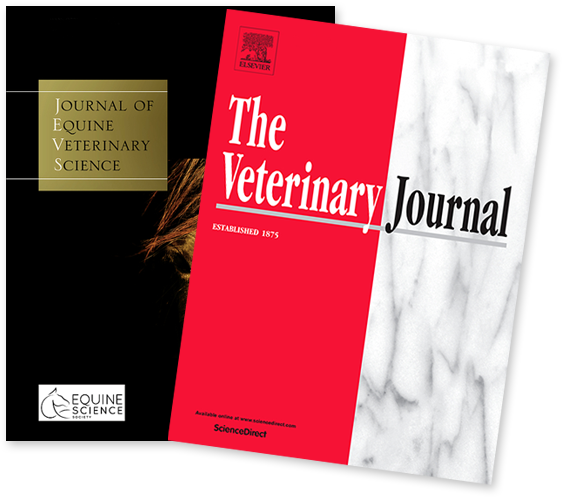Fairfax Saddles are immensely proud to have scientific papers published on our products.
What's the big deal?
When an article is published in an academic journal, it becomes part of the permanent scientific record. This is recognition that the testing has been carried out under controlled scientific conditions with little or no room for misinterpretation.
At Fairfax, we make enormous commitments in terms of time and financial investment to scientifically research and develop our products. Our efforts are truly rewarded when we can say the benefits to the horse’s performance are scientifically proven.
What is peer review?
Every paper in a scientific journal is peer reviewed. This means the editor sends the article to other scientists in the same field as the author. The other scientists scrutinise the methodology of the testing that’s taken place and provide unbiased feedback on the article, advising the editor whether or not they think the study is of high enough quality to be published. The fact that experts in the same field of research have approved the publication of a paper gives it credibility and authority.
The scientific method is an essential part of the study. A paper has to supply enough details so that an independent researcher could repeat the tests and verify the results. This means the testing had to be controlled and consistent. For example the same person tacked up each horse, the horses were not always ridden in the original tack first (to counteract any claim that they’d warmed up by the time the Fairfax tack went on) and each testing sessions took place within the space of one day.

Fairfax Performance Dressage Panel
Allows significantly greater hindlimb extension
Journal of Equine Veterinary Science 54 (2017) 60-69
Presented at BEVA Congress 2016
Patent: GB2515079B
Fairfax Performance Jump Panel
Enables increased shoulder flexion and fetlock clearance over a fence
Comparative Exercise Physiology 14-4 (2018) P239-247
Patent: GB2505962B
Fairfax Race Exercise Saddle
Reduces pressure on the horse's musculature at gallop
Journal of Equine Veterinary Science (2019)
Presented at BEVA Congress 2019
Fairfax Girth
Prove to allow greater forelimb extension
Veterinary Journal 198-1 (2013) 92-97
Presented at BEVA Congress 2012
Patent: GB2488030 | Design reg: 001839028
Fairfax Bridle
Enables increased knee and hock flexion
Journal of Equine Veterinary Science 25 (2015) 947-955
Patent: GB2517150B & 2540305B
Fairfax World Class Dressage Saddle
Saddle Thigh Block Design Can Influence Rider and Horse Biomechanics
MPDI Equine Gait Analysis: Translating Science into Practice
Wool flocked Performance panel - Patent: 2515079B






